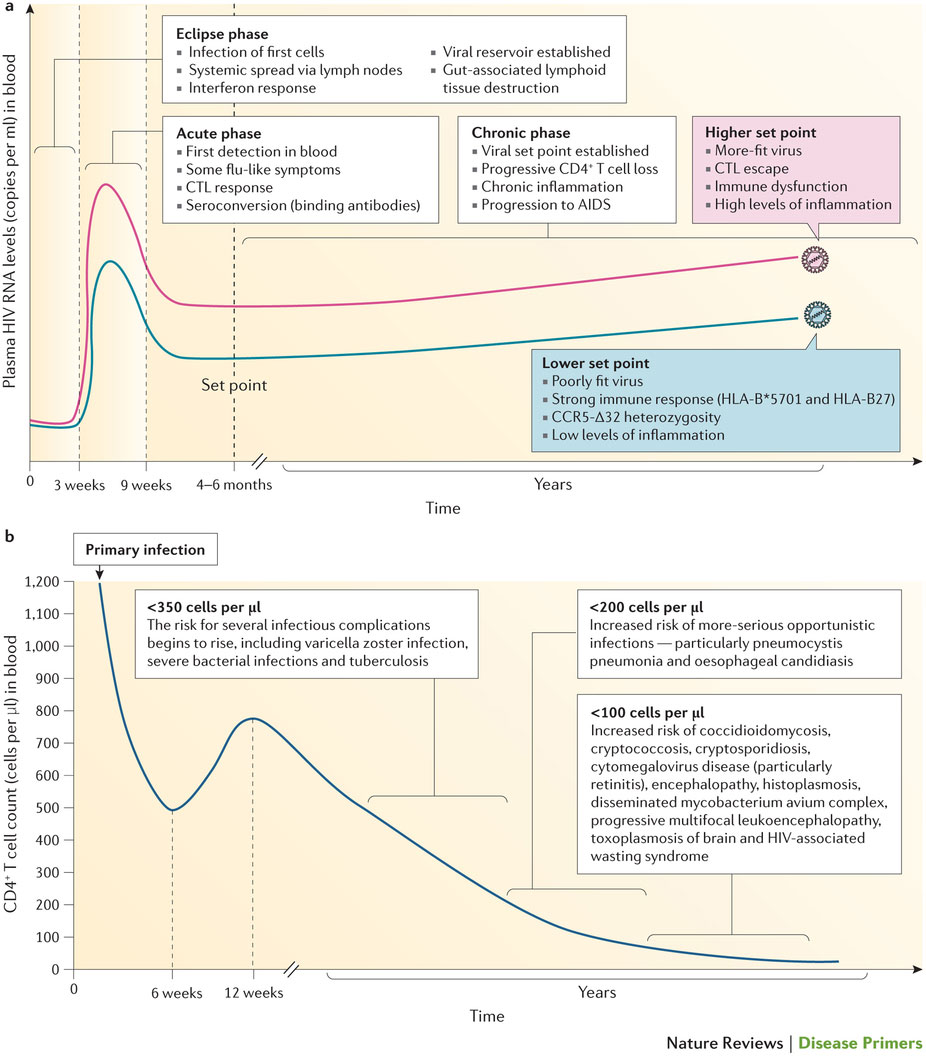HIV感染症
HIV infection
2015年10月1日 Nature Reviews Disease Primers Article number: 15035 (2015) doi: 10.1038/nrdp.2015.35

これまでに、世界で7500万人以上がヒト免疫不全ウイルス(HIV)に感染しており、現在も約3700万人の感染者がいる。未治療の場合、HIVが複製して、進行性のCD4+T細胞減少および広範な免疫学的異常が起こり、感染合併症と腫瘍合併症のリスク上昇につながる。HIV感染症は心血管疾患、骨疾患、腎機能障害、肝機能障害およびその他のいくつかの一般的な疾患にも影響する。抗レトロウイルス薬は、非常に効果的にHIVの複製を抑えるので、これらの薬剤を使用および継続できる患者にとって、抗レトロウイルス薬の併用療法は、ウイルスの複製の持続的な(おそらくは生涯にわたる)抑制につながる。ウイルスが抑制されると免疫回復が可能になり、後天性免疫不全症候群(AIDS)の発症リスクをほとんど排除できる。有効な治療を行った場合でも、HIV感染患者の心臓、骨、肝臓、腎臓および神経疾患のリスクは予想以上に高い。感染者(または非感染者)に抗レトロウイルス薬を最適な条件で使用した場合、HIVの伝播リスクを実質的に排除できる。予防科学が大きく進歩したにも関わらず、男性同性愛者、注射薬物使用者および性労働者のような多くの社会的弱者の間では、依然としてHIVの伝播が認められる。HIV検査の普及不足に加えて抗レトロウイルス薬に関する費用と毒性の問題から、大多数の感染者が有効な抗レトロウイルス療法を受けていない。このパンデミックを覆すためには、予防法、治療法および介入アプローチの改善が必要である。
PrimeView
世界中で何百万という人々がHIVに感染している。このPrimeViewでは、当該Primerに詳述しているHIVの予防法、管理法および研究目標の要約が記載されている。
本Primerの図解サマリー

